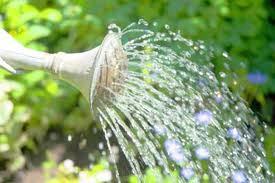Kathleen Finnegan
Home(818) 601-0056
are you water-wise?
Water conservation has become an essential practice in all regions, even in areas where water seems abundant.
In addition to saving money on your utility bill, water conservation helps prevent water pollution in nearby lakes, rivers and local watersheds.
Conserving water can also extend the life of your septic system by reducing soil saturation, and reducing any pollution due to leaks. Overloading municipal sewer systems can also cause untreated sewage to flow to lakes and rivers. The smaller the amount of water flowing through these systems, the lower the likelihood of pollution. In some communities, costly sewage system expansion has been avoided by communitywide household water conservation.
Water Conservation Facts
Most people in North America use 50 to 70 gallons of water indoors each day and about the same amount outdoors, depending on the season.
Indoors, 3/4 of all water is used in the bathroom
In the average home, the toilet accounts for 28% of water use.
Running a sprinkler for two hours can use up to 500 gallons.
As much as 150 gallons of water can be saved when washing a car by turning the hose off between rinses.
Washing a sidewalk or driveway with a hose uses about 50 gallons of water every 5 minutes
Water conservation in the home…
1. Check faucets and pipes for leaks
A small drip from a worn faucet washer can waste 20 gallons of water per day. Larger leaks can waste hundreds of gallons.
2. Don’t use the toilet as a wastebasket
Every time you flush facial tissue or other small bit of trash, five to seven gallons of water is wasted.
3. Use your water meter to check for hidden water leaks
Read the house water meter before and after a two-hour period when no water is being used. If the meter does not read exactly the same, there is a leak.
4. Install water-saving shower heads and low-flow faucet aerators
Inexpensive water-saving low-flow shower heads or restrictors are easy for the homeowner to install. Also, long, hot showers can use five to ten gallons every unneeded minute. Limit your showers to the time it takes to soap up, wash down and rinse off. “Low-flow” means it uses less than 2.5 gallons per minute.
You can easily install a ShowerStart showerhead, or add a ShowerStart converter to existing showerheads, which automatically pauses a running shower once it gets warm.
Also, all household faucets should be fit with aerators. This single best home water conservation method is also the cheapest!
5. Take shorter showers.
One way to cut down on water use is to turn off the shower after soaping up, then turn it back on to rinse. A four-minute shower uses approximately 20 to 40 gallons of water.
6. Turn off the water after you wet your toothbrush
There is no need to keep the water running while brushing your teeth. Just wet your brush and fill a glass for mouth rinsing.
7. Use your dishwasher and clothes washer for only full loads
Automatic dishwashers and clothes washers should be fully loaded for optimum water conservation. Most makers of dishwashing soap recomend not pre-rinsing dishes which is a big water savings.
With clothes washers, avoid the permanent press cycle, which uses an added 20 liters (5 gallons) for the extra rinse. For partial loads, adjust water levels to match the size of the load. Replace old clothes washers. New Energy Star rated washers use 35 – 50% less water and 50% less energy per load. If you’re in the market for a new clothes washer, consider buying a water-saving frontload washer.
8. Minimize use of kitchen sink garbage disposal units
In-sink ‘garburators’ require lots of water to operate properly, and also add considerably to the volume of solids in a septic tank which can lead to maintenance problems. Start a compost pile as an alternate method of disposing food waste.
Kathleen Finnegan
23925 Park Sorrento
Calabasas, Ca 91302
#01193021
Office 818-876-3111
Cell 818-601-0056

 Kathleen has been active in the Calabasas real estate market for over 20 years. Have a question?
Kathleen has been active in the Calabasas real estate market for over 20 years. Have a question? 

